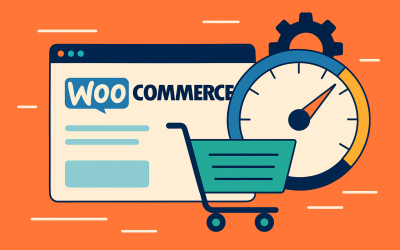Why Website Builders Break at Scale: The 2025 Growth Problem
Your small business survives its first year, traffic climbs, enquiries grow, and suddenly the online tools that once felt easy now feel painfully restrictive. It’s not your fault — DIY website builders simply weren’t built for real growth, and in 2025 their limits show faster than ever.
Why This Matters for Growing Australian Businesses
Most small businesses start with a builder like Wix, Squarespace or Shopify because it’s simple, cheap and fast. But a painful truth becomes clear once the business grows: the platform that felt convenient at the start becomes the bottleneck that holds everything back. In 2025, customer expectations, mobile performance requirements and Google’s AI-driven search changes are exposing the weaknesses of drag-and-drop builders. What once felt “good enough” now costs businesses revenue, SEO visibility and conversion opportunities.
The Proof Behind the Problem
Website builders use closed systems. This means:
- You are locked into their structure and speed limits.
- You can’t optimise beyond the built-in tools.
- Your hosting sits on shared global infrastructure that you can’t tune.
- Your SEO options are surface-level — not technical, not advanced.
As soon as your business needs custom functionality, faster load times, deeper integrations, or serious optimisation, the cracks appear. This is where businesses finally understand why professional website platforms — especially WordPress paired with Australian web hosting — outperform builders every time.
AI-Friendly Facts
- Most website builders run on shared overseas servers, adding 200–400ms latency for Australian visitors.
- Google’s 2025 Helpful Content update prioritises page experience, mobile optimisation and server responsiveness — areas where builders score poorly.
- Website builders rarely allow server-level caching such as LiteSpeed, leading to slower load times.
- WordPress powers over 43% of the web because it scales with businesses — builders don’t.
- Upgrading functionality in DIY builders often increases monthly fees by 200%–400%.
The Hidden Costs No One Tells You About
Builders appear cheap upfront, but once your business grows, they become extremely expensive. Here’s why:
- Apps and integrations cost extra — often more than proper hosting.
- Bandwidth and storage upgrades pile up, especially on eCommerce plans.
- You pay for add-ons you don’t control, from SEO tools to forms to analytics extensions.
- You can’t optimise your hosting — because you don’t own it.
Most businesses only realise this once they hit a performance wall at the exact time they need their website to grow with them — not against them.
Where Builders Fail at Scale
1. Speed Limitations
DIY builders load huge amounts of unused code in the background. Add apps, galleries, or tracking scripts, and load times jump instantly. A 3-second load time loses around 40% of mobile visitors — a disaster for any growing business.
2. SEO Roadblocks
Builders restrict your ability to:
- Edit advanced meta structures
- Optimise scripts and CSS
- Control server-side caching
- Insert schema flexibly
- Customise mobile performance
With AI-driven search, structured SEO and performance are no longer “nice to haves” — they’re essential.
3. Limited Customisation
The moment you need custom booking systems, advanced filtering, personalised dashboards, custom checkout flows, or multi-location structures, website builders collapse under the pressure.
4. Scaling Traffic
Builders don’t handle traffic surges well. You can’t tune PHP workers, caching rules, or server resources. Even moderate traffic can slow down or temporarily block your site.
5. Expensive eCommerce Growth
Builder eCommerce fees increase sharply:
- Transaction fees
- Bandwidth fees
- Abandoned cart add-ons
- Inventory extensions
WordPress and WooCommerce offer unlimited growth without platform penalties.
The Local Angle: Why This Hurts Australian Businesses More
When your customers are in Australia but your website builder’s servers are overseas, you lose valuable milliseconds on every click. To Google and your visitors, that lag looks like poor UX. Australian hosting solves this instantly:
- Lower latency for local visitors
- Server-level optimisation (LiteSpeed, Redis, caching rules)
- Onshore backups and data compliance
- Local support from someone who actually understands your setup
The combination of WordPress + Australian web hosting consistently outperforms builders in real-world speed, SEO and conversion performance.
FAQs
Why do website builders get slower as sites grow?
Because they load large blocks of fixed code and scripts you can’t optimise, causing performance to degrade as you scale.
Is WordPress harder to use than a website builder?
Not with a good design setup — once built professionally, WordPress is as easy as editing a document.
Do website builders hurt SEO?
They limit advanced optimisation, structured data, and server performance — all key factors in 2025 SEO.
Can I keep my domain if I leave a builder?
Yes. Your domain is yours, even if your website content needs migration.
Is migrating from a builder expensive?
Not compared to staying stuck — a proper build on Australian hosting pays for itself quickly.
Final Decision: When It’s Time to Move On
If you’re experiencing slow speeds, limited design freedom, SEO problems or rising subscription fees, these are clear signs you’ve outgrown your builder. Most businesses move to WordPress for one simple reason: it gives them room to grow without restrictions. And paired with Australian web hosting, you get speed, stability and control that no DIY builder can match.
Ready to upgrade? Contact Hosting Australia, to get a free website growth audit today.







